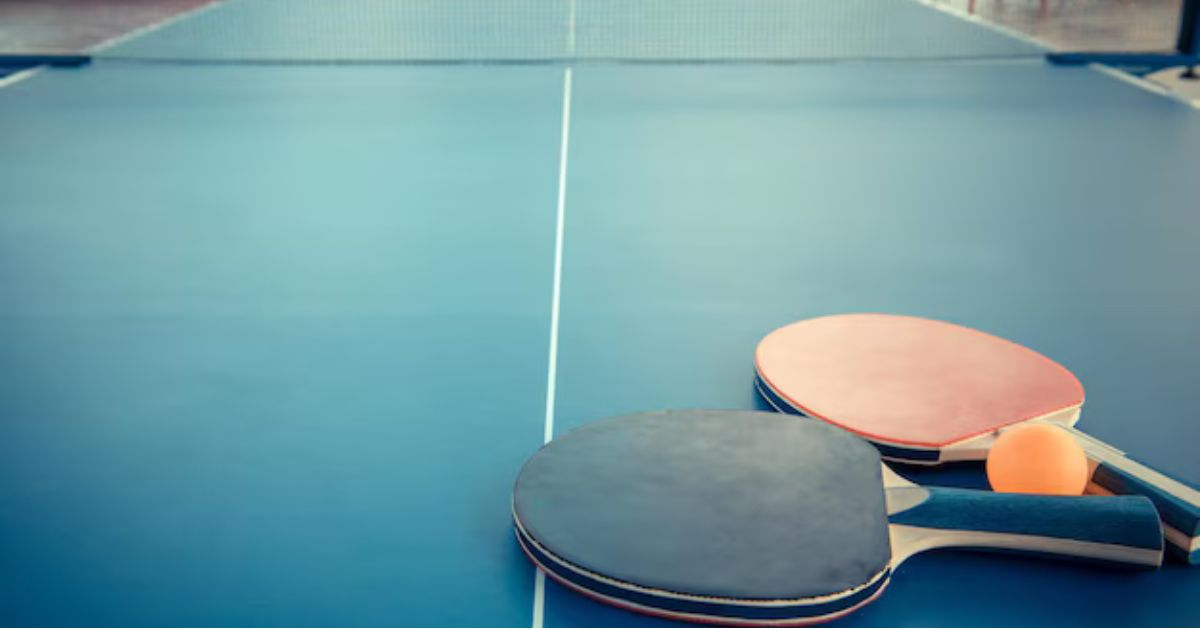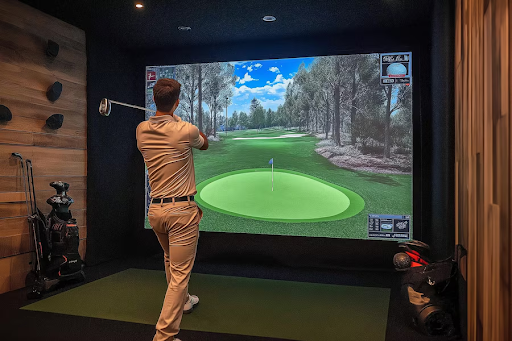When it comes to ping pong, also known as table tennis, having the right table is essential for a great playing experience. Whether you’re a casual player or an aspiring pro, the table you choose will have a huge impact on your game. In this guide, we’ll cover everything you need to know about ping pong tables, from selecting the perfect one for your needs to setting it up and maintaining it.
Types of Ping Pong Tables
Choosing the right ping pong table can be overwhelming due to the variety of options available. To make an informed decision, you need to know the different types of tables and their purposes.
Indoor Ping Pong Tables
Indoor ping pong tables are designed specifically for use inside homes, gyms, or sports centers. They usually have a medium-density fiberboard (MDF) surface, providing a smoother and more consistent bounce. The quality of the playing surface is critical, especially if you aim for competitive play. Indoor tables are sensitive to temperature and humidity changes, so it’s important to store them in climate-controlled environments.
Outdoor Ping Pong Tables
Outdoor ping pong tables are built to withstand various weather conditions, making them a great option if you want to enjoy the game outside. These tables are typically made from materials like aluminum composite or melamine that resist warping, rust, and moisture damage. They might not offer the same bounce as indoor tables, but they are durable and versatile for recreational use.
Convertible Ping Pong Tables
If you’re short on space, a convertible ping pong table is an ideal solution. These multi-purpose tables can transform from a regular dining or pool table into a ping pong table by simply placing a removable top. While they might not provide the exact bounce of a regulation table, they offer great functionality for those who want to maximize their living space.
Mini and Mid-Sized Ping Pong Tables
Mini and mid-sized ping pong tables are designed for casual or portable use. These tables are often smaller than the regulation size, making them suitable for kids or those with limited space. Despite their smaller dimensions, they provide good practice for players who want to develop skills in a more compact setting.
Regulation Size and Dimensions
Understanding the standard dimensions of a ping pong table is essential for ensuring you have enough space for proper play. The regulation size for ping pong tables is 9 feet long, 5 feet wide, and 30 inches tall. This size is used in all official competitions and tournaments. The playing surface must be dark with white boundary lines around the edges. Most tables also include a centerline for doubles play.
In addition to the table’s dimensions, ensure that the playing area around the table is sufficient. Ideally, there should be at least 5 feet of clearance on each side and 10 feet at each end to allow for comfortable movement during play.
Table Thickness and Playing Surface
The thickness of the ping pong table’s surface is another important factor to consider. Generally, thicker tables provide better ball bounce. Here’s a quick breakdown of the common surface thicknesses:
- 15mm-19mm Thickness: These are entry-level tables. They offer decent bounce but may not be ideal for serious or competitive play. Great for casual home use.
- 19mm-22mm Thickness: These tables are considered mid-range and provide a more consistent bounce, making them suitable for both home and recreational clubs.
- 22mm-25mm Thickness: This thickness is used in professional-level tables and offers the best and most consistent bounce. They are ideal for competitive players and clubs that host tournaments.
Portability and Storage Options
Not everyone has the luxury of leaving a ping pong table set up all the time. If you need to store your table when not in use, portability becomes an important factor.
Foldable Ping Pong Tables
Many ping pong tables are designed to fold in half for easy storage. These tables come with wheels for portability, allowing you to move them around as needed. Some tables can also be folded into a playback position, where one half remains upright, enabling solo practice.
Stationary Ping Pong Tables
If you have a dedicated game room or space for a permanent setup, stationary tables are a solid choice. These tables don’t fold and are often sturdier than portable options. However, keep in mind that once set up, they will take up space permanently.
Setting Up Your Ping Pong Table
Setting up your ping pong table correctly is crucial for an optimal playing experience. Most ping pong tables come with assembly instructions, but here are some general steps to follow:
- Choose a Flat Surface: Ensure that the area where you plan to place your table is flat. Any unevenness in the surface can affect the ball’s bounce.
- Assemble the Table: Follow the manufacturer’s instructions closely. Most tables come in two halves, which need to be connected and leveled.
- Attach the Net: Once the table is assembled, attach the net in the middle. The net should be tight and stand 6 inches high.
- Test the Table: Before you start playing, check for any wobbles or uneven surfaces. Make sure the table is sturdy and properly leveled.
Maintaining Your Ping Pong Table
Proper maintenance of your ping pong table ensures longevity and consistent performance. Here are some tips for taking care of your table:
Indoor Table Maintenance
- Clean the Surface Regularly: Dust and dirt can accumulate on the table, affecting the ball’s bounce. Use a soft cloth or table cleaner to wipe the surface gently.
- Protect from Humidity: Avoid placing your indoor table in a humid area as moisture can cause warping. Consider using a cover when the table is not in use.
- Check the Net: Periodically check the net for wear and tear. Replace it if it begins to sag or shows signs of damage.
Outdoor Table Maintenance
- Protect from the Elements: Although outdoor tables are designed to withstand weather, using a table cover or storing the table under a roof can prolong its lifespan.
- Clean after Use: Outdoor tables might collect debris like leaves or dust. Wipe them clean after every use to prevent buildup.
- Check for Rust: Inspect the table’s metal parts for rust or corrosion, especially after exposure to rain or moisture.
Essential Ping Pong Accessories
In addition to the table itself, you’ll need a few essential accessories to complete your ping pong setup. Here’s a list of must-have items:
Ping Pong Paddles
Quality paddles are essential for any player. They come in a variety of styles, ranging from beginner to professional. Look for paddles with a comfortable grip and durable rubber surfaces for better control and spin.
Ping Pong Balls
Ping pong balls come in various qualities. For recreational play, basic 1 or 2-star balls work fine. However, if you’re looking for tournament-grade balls, opt for 3-star, ITTF-approved options.
Net and Post Sets
If your table doesn’t come with a net, you’ll need to invest in a good-quality net and post set. Adjustable nets are ideal, allowing you to customize the tension to your liking.
Conclusion
Choosing the right ping pong table is crucial for a great playing experience, whether you’re playing casually with friends or training for a tournament. By understanding the different types of tables, proper dimensions, and essential accessories, you can make an informed decision that will enhance your ping pong experience. Maintaining your table and choosing the right accessories can make all the difference in your game. Happy playing!
FAQs
Can I use an indoor ping pong table outdoors?
No, indoor tables are not designed to withstand outdoor conditions. Moisture and temperature changes can damage the playing surface and cause warping. It’s best to invest in an outdoor table if you plan on playing outside.
How much space do I need around my ping pong table?
For comfortable play, you need at least 5 feet of space on either side of the table and 10 feet at each end. This allows players to move freely without hitting walls or other obstacles.
What is the difference between a cheap and an expensive ping pong table?
The primary differences are in the table’s surface thickness, bounce consistency, and overall durability. Expensive tables, usually with a thickness of 22mm-25mm, provide a professional-grade bounce and last longer, while cheaper tables are thinner and better suited for casual play.
How often should I replace the net on my ping pong table?
You should replace the net if it starts to sag, tear, or lose its tension. Nets can wear out over time, especially if frequently adjusted or exposed to the elements. Checking it every few months should help maintain optimal play.
What is the best way to clean a ping pong table?
For indoor tables, use a soft cloth or a microfiber towel to wipe the surface gently. You can use a small amount of water or a specialized table tennis cleaner. Avoid harsh chemicals that could damage the table’s finish.
Can I fold the ping pong table for solo play?
Yes, many ping pong tables come with a playback feature that allows you to fold one half of the table upright. This creates a rebound surface for solo practice.












